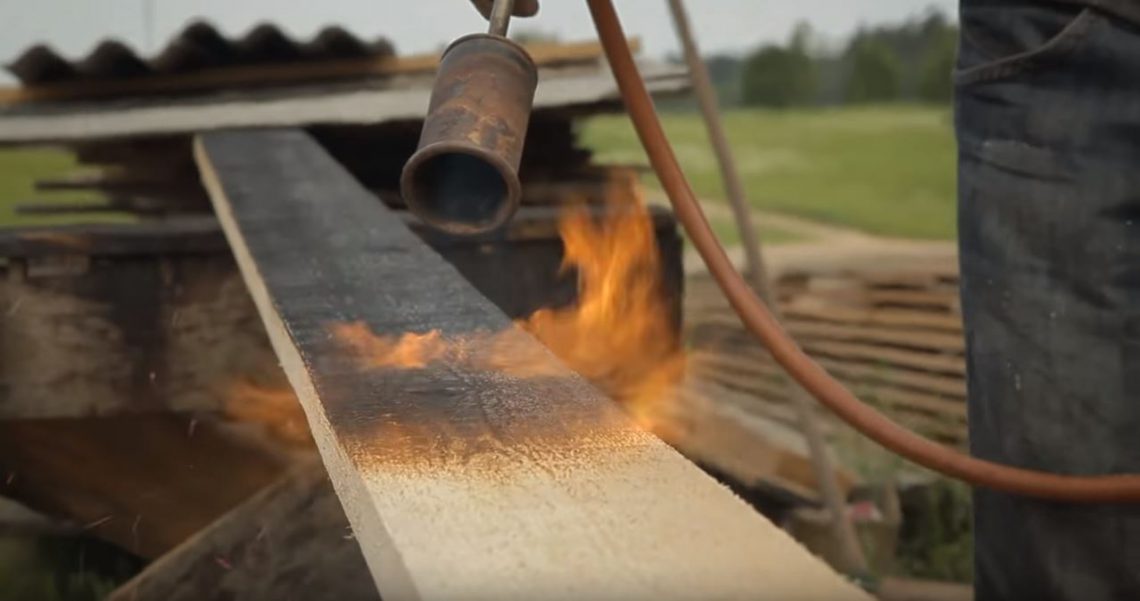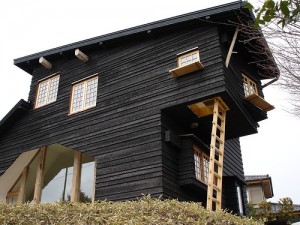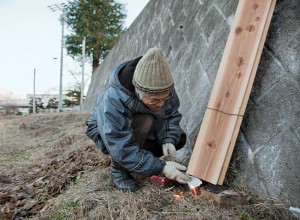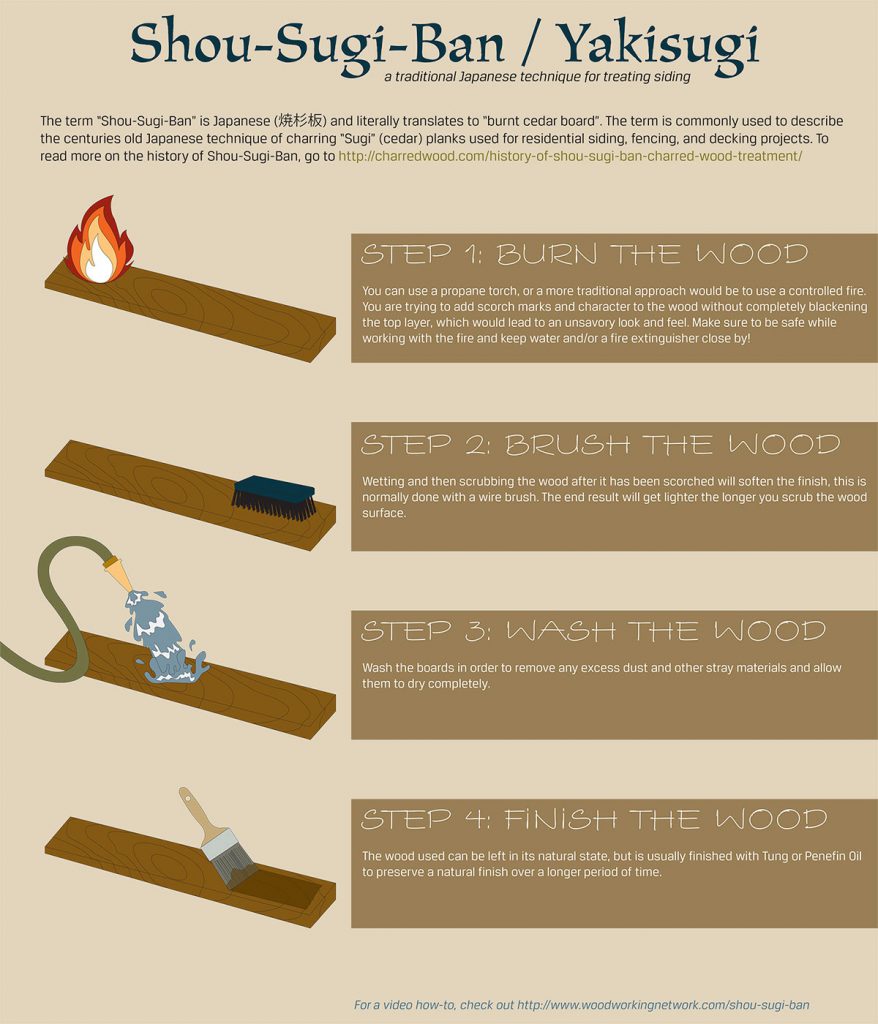
Overview
 Shou Sugi Ban 焼 杉 板 is an ancient Japanese exterior siding technique that preserves wood by charring it. Traditionally, the raw lumber, Yakusugi, (Cryptomeria japonica) commonly called Japanese cedar, from the island of Yakushima, was used. It is still a popular tradition in the Okayama Prefecture of Japan. Nowadays, designers and architects use other species of wood like western red cedar, douglas fir, cyprus, pine and oak. The process involves charring the wood, cooling it, cleaning it, and finishing it with a natural oil. Although time consuming, the final product is not only gorgeous, with its rich, silvery finish; the charred wood also resists fire, rot, insects, and can last up to 80 years.
Shou Sugi Ban 焼 杉 板 is an ancient Japanese exterior siding technique that preserves wood by charring it. Traditionally, the raw lumber, Yakusugi, (Cryptomeria japonica) commonly called Japanese cedar, from the island of Yakushima, was used. It is still a popular tradition in the Okayama Prefecture of Japan. Nowadays, designers and architects use other species of wood like western red cedar, douglas fir, cyprus, pine and oak. The process involves charring the wood, cooling it, cleaning it, and finishing it with a natural oil. Although time consuming, the final product is not only gorgeous, with its rich, silvery finish; the charred wood also resists fire, rot, insects, and can last up to 80 years.
 Traditionally, the shou sugi ban technique entails tying three planks into a triangular tube and lighting the interior on fire before opening and quenching with cold water when ready. However a simpler modern approach can achieve the same effect with a propane torch or by using a kiln for large production. The charred result can be left alone or the sooty layer can be brushed off for a more refined and polished look.
Traditionally, the shou sugi ban technique entails tying three planks into a triangular tube and lighting the interior on fire before opening and quenching with cold water when ready. However a simpler modern approach can achieve the same effect with a propane torch or by using a kiln for large production. The charred result can be left alone or the sooty layer can be brushed off for a more refined and polished look.
The charring, while not only aesthetically pleasing, also has utilitarian effects. It can improve the lifetime of the planks by preventing decay and rot. It also discourages insect infestation, improves dimensional stability, and improves flame retardant properties. Since the cellulose of the wood contains the sugars desirable to insects, bacteria, and fungus, once the planks are heat-treated, the shou sugi ban wood loses its appeal to these detrimental forces and will therefore last longer than untreated wood.
